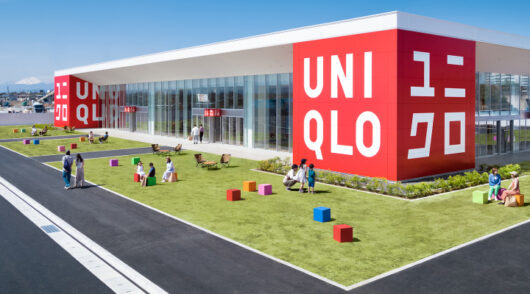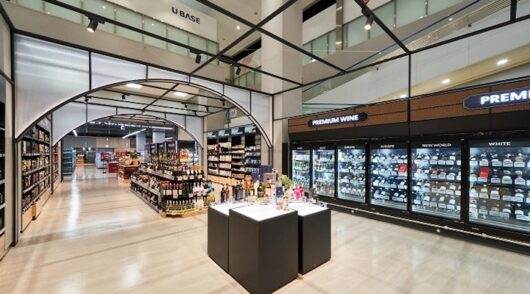Asia’s scale, its pace of innovation and growth prospects mean that it’s one of the most exciting regions for food and consumer goods in global retail. So what’s in store for Asian retail this year?
At IGD, we continually track how Asian retail businesses are looking to deliver to a rapidly changing shopper, by offering ultra-convenient solutions, investing in partnerships to develop online retail, using social media to drive sales, transforming store operations with new technology and helping shoppers live healthier lives.
Many of these trends will continue and evolve this year, while new ones will emerge. Here are five key themes we expect to shape the market and influence retail strategy.
Shopper-focused formats
Across Asia, retailers are becoming more sophisticated at understanding their shoppers and flexing their stores to changing shopper preferences. Stores that are relevant, efficient and different will stand out and win in an increasingly competitive landscape. Increasingly shoppers want to be excited and inspired by their experience in-store and mediocre shops will struggle in this environment.
Asian retail companies are experimenting with new formats, flexing store footprints, designs and layouts to better appeal to how people want to shop this year. Ranges are being tailored to the location of the store, while we’re seeing space provided to new categories and services that drive footfall.
A great example of this is FamilyMart, which has opened its largest convenience store in Manila, Philippines. The store targets busy employees and office workers, with foodservice options central to its offer. In addition, co-working space and function rooms are also available.
Established retailers accelerating online
IGD forecasts Asian retail’s online grocery market to grow to US$295 billion by 2023, leading online grocery growth globally. However, across the continent the development of online grocery retail varies considerably by geography, with established grocery retailers playing catch-up compared to pure-play specialists.
As demand grows, established retailers are increasingly recognising the need to invest, to build capability and adopt new solutions. Retailers are investing more in their operations and forming partnerships to drive both online capacity and capability, with enhanced last mile delivery solutions and supply chain automation aiding profitability.
Aeon has partnered with UK online grocery retailer Ocado to develop its online grocery business in Japan. Ocado will build automated warehouses where robots fill customer orders ready for home delivery. Aeon will also launch a new online business using the Ocado Smart Platform.
Health, wellness and sustainability
Consumers in Asia are becoming more aware of the importance of eating a balanced diet, as well as the impact of the food and consumer goods industry on the environment. Asia’s young and growing middle classes will drive this trend further this year, with younger generations also set to reward retailers and manufacturers that demonstrate purpose beyond simply driving revenue.
Retailers and manufacturers are responding with improved health and wellness ranges and reformulated products, new solutions to showcase nutritional benefits and product sourcing information, plus a greater focus on initiatives that reduce environmental impact.
A great example of this is Central Retail in Thailand, which stopped giving out plastic bags around the middle of last year, six months before the government enforced its ban. The retailer also asks shoppers to bring their own containers for salads and rewards them with discounts.
Making shopping social
Social commerce is the ability to sell seamlessly through social platforms, but also how businesses can use peer-to-peer communication to drive sales. Asia is leading the world in terms of social commerce with brand communication via social media commonplace. Social platforms bring together huge numbers of consumers in one place, making them ideal places to sell products.
The Asia retail market offers many social platforms that have increasing levels of capability through which to sell products. New selling techniques are growing in importance and emerging all the time, while new apps and solutions are being developed.
Alibaba ramped up its social efforts for 11.11 last year, with over 17,000 brands using live streaming and key opinion leaders to relay product information. Alibaba is also testing AI-powered real-time translation for live streaming.
Digital stores of the future
E-commerce and new technology are changing shopping habits and blurring the boundary between the offline and online worlds. However, 84 per cent of modern trade in Asia will remain in physical stores in 2023. Therefore, stores remain important, but they need to adopt new technology to stay relevant.
Asia is a hotspot for digital innovation in-store. Digital is helping retailers accelerate omnichannel, transform processes and enhance the shopping experience. Increasingly digital technology will allow retailers to deliver a much more personalised in-store experience.
Lotte in South Korea has collaborated with P&G to install interactive product recommendation screens around its stores. The screens help drive incremental sales and interaction with the brand.
Continually exciting shoppers
It is clear from these trends that retailers must continually excite shoppers with in-store activity this year. Plans must be relevant and different from those of your competitors and deliver increasingly tailored solutions for shoppers. In addition, increased collaboration will unlock further online growth, with established retailers looking to collaborate with businesses that will help them drive sales, profitability and capability. Finally, brands are using social media in lots of ways to engage shoppers, providing a fantastic opportunity for manufacturers to sell via this channel, collect valuable shopper intelligence and to test and learn to see what works.
- Nick Miles is head of Asia-Pacific at IGD. He joined the team in September 2011, specialising in Asian and Australian grocery retailing and his core responsibilities include shaping the strategy for IGD’s growing research programme in Asia-Pacific, plus managing the analyst teams in IGD’s UK and Singapore offices.






